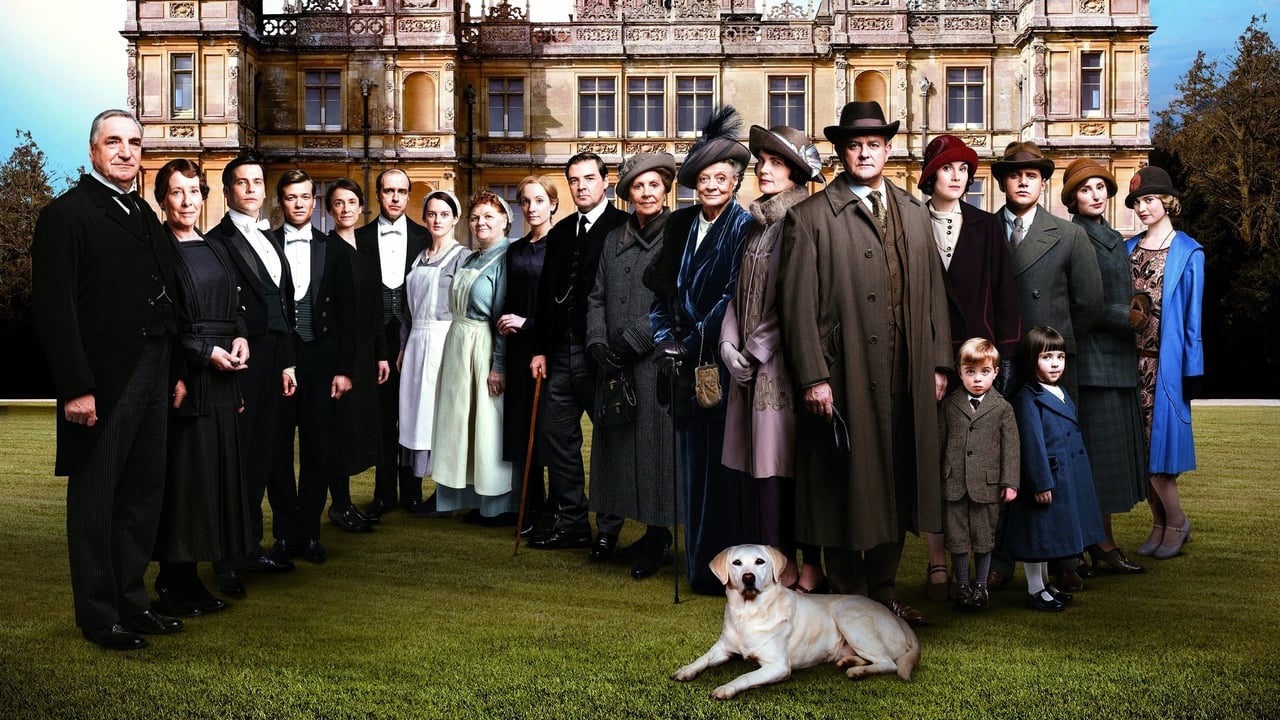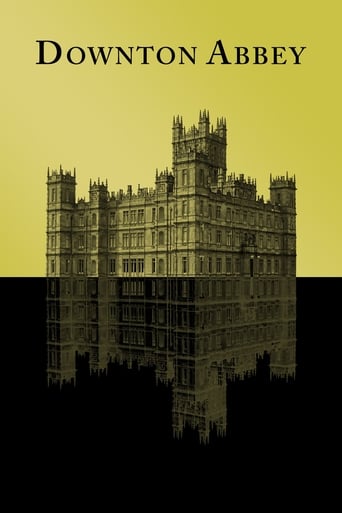

I've just finished the arching the entire series and I enjoyed every minute of it. Before I started watching it I didn't think that I'd like it. I thought it'd be soppy and more geared towards a female audience but how wrong I was.It's one of my favourite series and I'm sad that's it's finished. I wish there was more...
... View MoreElizabeth Montgomery is the weak link in this series. Otherwise, I thoroughly enjoy this series. Z3
... View MoreJust an ordinary TV show, with a good wardrobe and the appealing touch the British master. Aside from that, its just another Soap Opera. Each episode feels like an overdose of drama. Unbalanced characters: The ones easy to love (Count and his family, Bates, Anna, etc etc) and those f****** Thomas and O'Brien (why is she his friend at all? Why do they work there AT ALL?). Good side, i'm loving the performances of some actors, Maggie smith i.e., we didn't see much of her in Harry Potter but here she steals the show every time she's on screen. Michelle Dockery as well as Mary, etc etc.Overall, 6/10 may be the best score I ever gave a Soap opera ever.
... View More"Downton Abbey" has many qualities, which have already been highlighted: splendid period reconstitution, mix of historical events and individual stories, consistent central plot with ramifications, multiple character focus, witty dialogues, excellent acting, etc.This review (based on Season 1) analyses just one of them: how aristocrats and servants evolve in two parallel worlds that do not connect, yet present troubling similarities.1. DISCONNECTIONThe series manages to show two physically close environments as if they were on different planets. This underlines the disparities between social milieus in early 20th century Britain.Servants frequently go from the basement to the ground floor, however we never see them arriving there or leaving. This disconnection is first spatial: they sometimes start climbing the stairs, yet the camera never follows thoroughly (there are travelling shots following characters, but they always happen on the same storey). It is also temporal: we suddenly see servants on the ground floor without a link to previous action in the basement. Granted, there is a technical reason for that: all action on the ground floor and above was shot on site (Highclere Castle, UK), while action in the basement was shot in Ealing studios, since the castle's basement was not suited for period settings. Nonetheless, it would have been easy to film the servants going up the stairs in the studio and then edit their arrival on the ground floor (or conversely), which the series never does.Likewise, we see servants in above floors (aristocrats' bedrooms and servants quarters), yet never witness them arriving there. We do see them in the side staircase, but never going from there to the different levels: it is as if these stairs were separate quarters disconnected from the rest of the castle. Stairs could represent the possible link between servants and aristocrats (below versus above), but are denied their symbolic connection since they seem to lead nowhere. Here the reason cannot be technical as for the above topic, since the stairs are effectively located in the castle.Lighting on the ground floor and the aristocrats' bedrooms is generally bright, while in the basement and the servants' quarters it is always dim. Naturally, this can be explained by the windows sizes, however the contrast is pushed to the extreme: on cloudy days, the aristocrats' levels could be grim which rarely happens, while on sunny days the servants' levels could be bright which never occurs. Moreover, in the aristocrats' levels, colours are generally warm (yellow, red, white), while in the servants' levels they are usually cold (grey, brown, blue).Camera movements in the aristocrats' levels are fluid, poised, lengthy, while in the servants' levels they are brisker, faster, shorter. In the basement, the camera is frequently hand-held, highlighting the intensity of the work performed. Also, there sometimes is a character or an object in the foreground while action occurs in the background: we seem to bump into elements. The use of long lenses (foreground is blurred, background is sharp) increases this sensation of confinement. By contrast, in the aristocrats' levels, image is generally sharp.*** WARNING: CONTAINS SPOILERS ***2. SIMILARITIESDespite the symbolic gap between them, aristocrats and servants sometimes experience similar events. The message seems to be: regardless of social differences, we are all humans, with joys, grieves, qualities, flaws and secrets. Here are just a few examples (I will refer to characters either by their first or last name, depending on what is most common in the series).Servants are all decent, with two notable exceptions, who are real "villains": O'Brien and Thomas. Aristocrats are all decent, with two notable exceptions, who are real b**ches: Edith and Mary (although Mary reveals herself as more complex towards the end of Season 1).Servants cannot marry because of their function: Mrs Hughes turns down her lover; Carson is a long-time bachelor; the love between Anna and Bates remains chaste. The Crawley daughters cannot marry: Mary turns down pretenders including Matthew, who then turns her down; Edith is turned down by Anthony Strallon; Sybil is still young.William loves Daisy, who loves Thomas who prefers men. Edith loves Matthew, who loves Mary who does not love anybody. Both settings progressively evolve, however they occupy most of Season 1.Bates has a complex and shameful past: war, alcohol, thievery, jail. Mary has sexual relations before marriage, which was scandalous at the time, especially for an aristocrat; and it provoked the death of her lover Kemal Pamuk. All these terrible secrets will progressively be revealed.Various lesser intrigues between the aristocrats are echoed with the servants, and conversely. For instance: Thomas sends a letter to compromise Bates; Edith sends a letter to compromise her sister Mary. Gossip is widespread between the two milieus and within each.-----On both above topics, "The Rules of the Game" (Renoir, 1939) greatly influenced the series as well as "Gosford Park" (Altman, 2001), written by Julian Fellowes himself. Yet "Downton Abbey" manages to create a specific atmosphere, distinct from these two movies.If I had to rate Season 1 compared to a cinema feature, I would probably give it 7/10: despite all its qualities, it does have some downsides. Characters are Manichean. It triggers easy emotions. Some events are far-fetched (e.g. the feud between Mary and Edith, Kemal's heart attack). It mostly shows early 20th century as good old times and aristocracy as a benevolent power. The worst villains are all non-aristocrats: O'Brien, Thomas, Carson's ex-stage partner, the drunken mob at the suffragette rally.However, most of these drawbacks can be explained by the series format, which generally requires simplification to maintain attention on the long term. Hence as a series it probably rates 9/10 for all the qualities briefly described at the beginning of this review. The final rating 8/10 is an average of the two: entertaining and convincing but not essential.
... View More